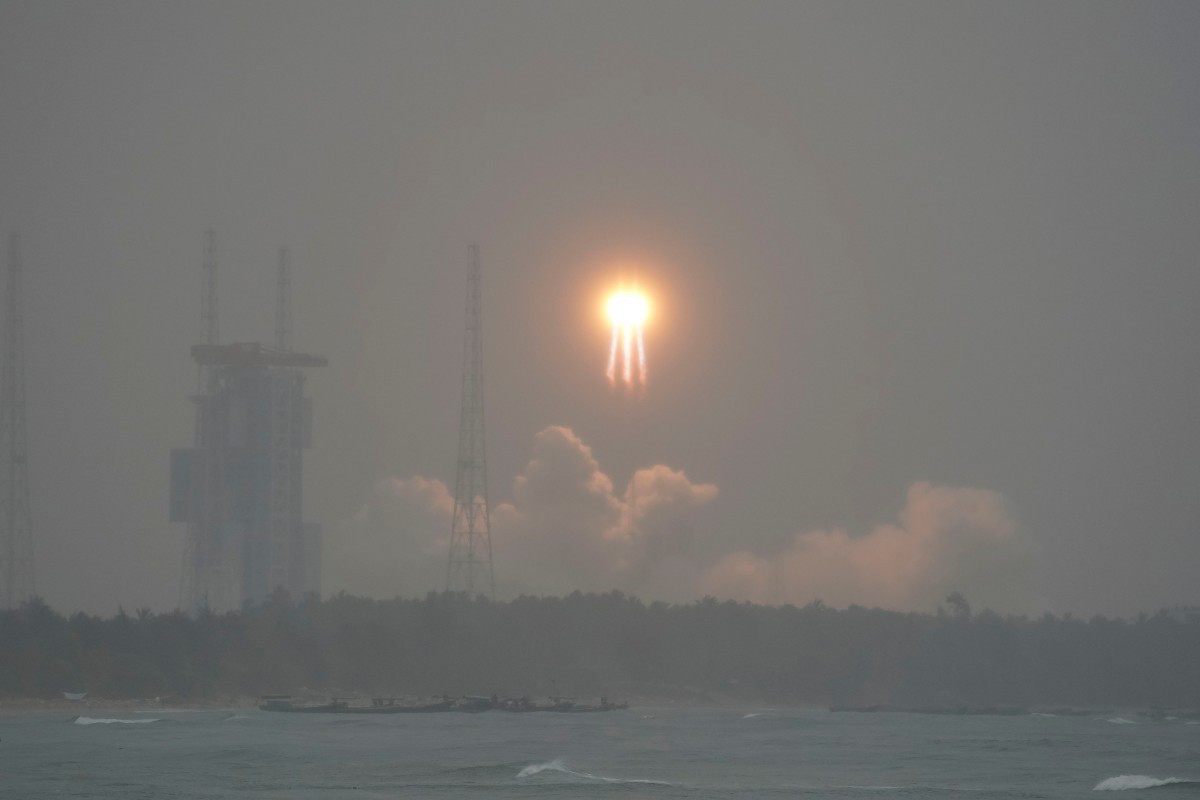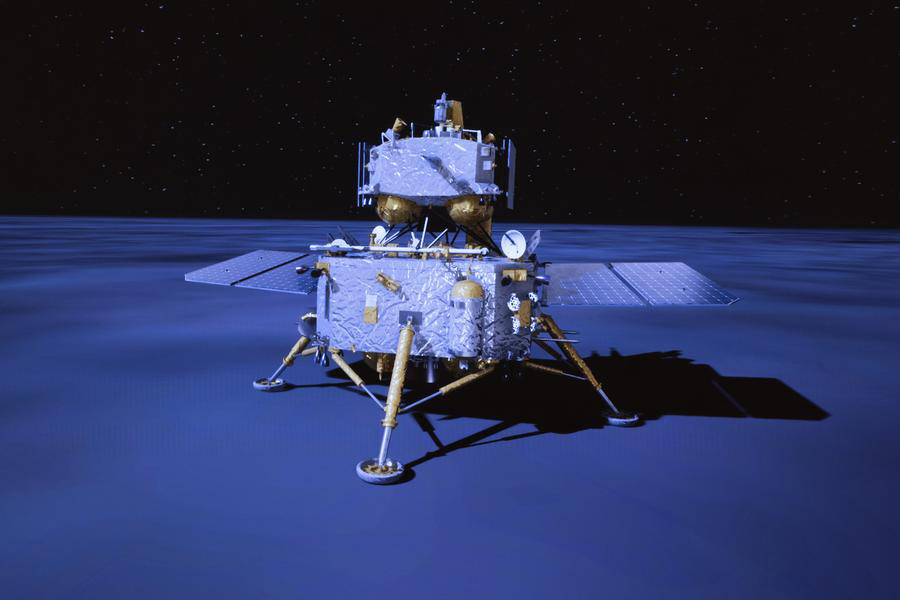The Chang'e 6 spacecraft has landed on the far side of the Moon and will collect samples from this rarely explored area for the first time in history.

On the morning of June 2, Xinhua News Agency reported that China's Chang'e 6 lunar probe successfully landed on the far side of the moon. This is part of a 53-day mission that began when the probe was launched into space on May 3.
Landing on the dark side of the moon is seen as the latest leap forward for China's decades-long space program.
Xinhua News Agency quoted information from the China National Space Administration (CNSA) saying that with the support of the Queqiao-2 relay satellite, the Chang'e 6 lander/launcher complex successfully landed in the designated area in the South Pole-Aiken Basin (SPA) on the Moon.
After landing, the rover will collect lunar soil and rocks and perform other experiments at the landing site, a process that will be completed within two days. The rover will use two collection methods: a drill to collect samples from below the surface and a robotic arm to retrieve samples from the surface.
From the collected samples, researchers will establish an exact replica of the sampling area based on Chang'e 6's collection results of the environment, rock distribution, and soil conditions at the landing site.
"The Chang'e-6 mission is the first human sample collection and return mission from the far side of the Moon. It involves many technical innovations, high risks and great difficulties," the CNSA said.
This is China's second mission to the far side of the moon, a region that no country has visited before. This region always faces away from Earth, making communication difficult.
The dark side of the moon is called that because it is invisible from Earth, not because it never catches the sun's rays. The region holds promise for research because its craters are less likely to be covered by ancient lava flows, scientists say.
Material collected from the dark side could shed more light on how the Moon formed.

The landing will also boost China's position as a space power in the global race to the Moon, where countries including the United States are hoping to mine minerals to sustain long-term astronaut missions and bases there.
China's "space dream" plans have been accelerated under President Xi Jinping. Beijing has poured huge resources into its space program over the past decade, aiming to narrow the gap with the two space superpowers, the United States and Russia.
The country has made some notable achievements, including the construction of a Tiangong space station.
Beijing has also sent rovers to Mars and the Moon. China is also the third country to send humans into orbit.
However, the US is concerned that China's space program is being used to conceal military goals and efforts to establish dominance in space.
China aims to land humans on the Moon by 2030 and plans to build a base on the lunar surface. Meanwhile, the US is also planning to return astronauts to the Moon in 2026 with the Artemis 3 mission.
HA (according to Tuoi Tre)